Growing chrysanthemums at home: planting and care
Chrysanthemums are popular garden and home plants. What conditions does a plant need for the formation of lush bright buds?
Content:
- Chrysanthemum: description of the plant, variety of species
- Growing chrysanthemums from seeds
- Planting chrysanthemums in open ground
- Planting indoor chrysanthemums
- Reproduction, caring for chrysanthemums and possible problems
Chrysanthemum: description of the plant, variety of species
Gardeners love chrysanthemum not only for its beautiful lush bloom. It is one of the last to bloom, therefore it pleases the eye until the onset of cold weather. Chrysanthemum is found naturally in North America, China, Europe and Asia. Exist a large number of species, there are about 150 of them. Chrysanthemums are grown not only in the garden as a flowering plant, but also protected ground is used, and flowers are used for cutting.
For cultivation on the site, two varieties are used: ground chrysanthemum and Korean.
Chrysanthemum belongs to the Asteraceae family. The flowering period lasts from September to October. Leaves are sessile, green with a gray tinge, erect stems.
The height of the shrub can vary from 30 to 110 cm. The larger the shrub, the more flowers are formed on it, under favorable conditions it can grow up to 100 inflorescences with a double or semi-double surface. The rhizomes of the plant are branched, with root shoots, penetrate into the soil to a depth of 25 cm.
The inflorescence of the chrysanthemum is a basket, it contains a large number of individual flowers.
The diameter of the inflorescence ranges on average from 5 to 10 cm. The shape of the flowers can be varied.: flat, pompous, anemone. The color has a wide palette, the petals can be lilac, orange, crimson, pink, red, white, orange. A pleasant light aroma emanates from the flowers.
Chrysanthemums are planted in group plantings, combining shrubs with flowers of different shades. Chrysanthemums complement those trees that change the color of their foliage with the change of season. You can also do group plantings with other perennial herbaceous plants or shrubs.
The most common types that are grown on sites:
- The crowned chrysanthemum has a simple stem, the height reaches 70 cm, although it may be less. Basal leaves do not stay on the plant for a long time. Inflorescences are single or collected in groups. Leaves of this type can be used for food.
- Chrysanthemum alpine low-growing plant, average height 15 cm. Leaves are collected in a rosette, single baskets, 3 cm in diameter. The flowering period lasts from July to August. This variety looks great on alpine slides, it is also grown in pots, borders.
- Chrysanthemum keeled - an annual species, grows from 20 to 70 cm. The stem is erect, fleshy, the leaves are also dense. Inflorescences can be double and semi-double, have a pronounced aroma. The flowering period lasts from June to September, the flowering is abundant.
- Shrub chrysanthemum is a tall species, reaching 1 meter. Inflorescences are large, reach 5 cm in diameter, double or semi-double, can be located singly or in groups of 2-10 pieces.Flowers are tubular or ligulate.
- Chrysanthemum mulberry (Chinese) - bred artificially, this is a low-growing plant whose height ranges from 30 to 130 cm. The shoots are erect, lignify over time. Inflorescences can be simple, semi-double or double, reach an average of 6 cm in diameter, emit a pleasant light aroma.
- Korean chrysanthemums originated in a hybrid way. Flowers can reach a diameter of 15 cm, the maximum height of the shrub is 1 meter.
Hybrid varieties are easier to tolerate bad weather and temperature changes. They are less likely to encounter diseases and pests, and have a long flowering period.
Growing chrysanthemums from seeds
Growing chrysanthemums from seeds does not require much time and special conditions. The plant is not whimsical and adapts well to environmental conditions. Not all types of chrysanthemums are grown from seeds, only some annual species, as well as Korean small-flowered representatives, are suitable. Other types of chrysanthemums can be obtained only by dividing the bush or by cuttings.
Sowing seeds of annual chrysanthemums can be done directly in open ground.
This is done in mid-May. Flowering occurs only in autumn, if you want to see flowers as quickly as possible, then seedlings are planted, it quickly adapts to open ground and environmental conditions. The seeds of perennial chrysanthemums are sown at the end of January. If the winter turned out to be cold, then you can wait another month and sow chrysanthemums in February. The development of seedlings is slow, so if you plant a flower in the spring or later, then flowering will come only next year.
The soil for sowing seeds needs light, you can prepare it according to the following scheme:
- 1 part sand
- 1 part humus
- 2 pieces of leafy land
Expanded clay, gravel or other material that acts as a drainage must be placed on the bottom of the seedling container. The seeds of annual species are planted to a depth of no more than 1 cm. If the chrysanthemum is Korean, then the seeds are laid out on the surface. The sprouts will appear in about 2 weeks; under favorable conditions, the period may be reduced.
While the seedlings are in containers, the ambient temperature should be within 18 degrees. The soil must be constantly moist, for this it is periodically sprayed from a spray bottle, preventing it from drying out. The water for spraying is warm and settled. When several full-fledged leaves appear, the plants dive into separate containers.
Seedlings are transplanted into open ground in early June, and if the weather permits, then a little earlier.
An open, sunny place is chosen on the site. Groundwater should not pass close to the surface, chrysanthemums do not like stagnant water. The soil should be light and fertile. In the fall, chrysanthemums are dug up and stored until spring in a cool room. This is done only in the first year while the plants have not yet matured. Further, no shelter is required for the winter, especially if the winter is mild.
Planting chrysanthemums in open ground
It is very easy to grow chrysanthemums outdoors, but this does not mean that it does not require special conditions:
- The most important thing is to choose a sunny area.
- In addition, the plant should not be affected by wind and drafts, so it is advisable that the flowers are blocked by a fence or a house.
- For chrysanthemums, you need to find a flat area. This is due to the spring period, if the flowers are planted in the lowlands, that is, there is a great risk that during the melting of the snow, the water will drain and flood the plants. The same goes for rainy weather, a large amount of water can lead to the death of plants.
- The ideal option for chrysanthemums is a place near hedges, it will let in light for flowers and protect from bad weather.
The flowering period of most varieties falls in autumn, so the light regime should be as natural as possible.If you make changes, then the petals of the flower can change their structure, the stem becomes less durable, the decorative effect of the flower is significantly reduced.
If there is not enough sun for the flower, only flower buds will form. If the daylight hours are increased, then axillary buds, leaves and stems will be laid. That is, for the normal life of a plant, it needs an ordinary daylight hours so that all processes go on as usual.
If it is necessary for the chrysanthemum to bloom a little earlier, then during the formation of buds, the plant is covered from the sun. Then flowering can start 2 weeks earlier.
The Korean variety is the most hardy among the rest.
After winter, it begins to actively develop at a temperature of 2 degrees Celsius. If autumn began early and the first frosts fell during the flowering period, then this is not a big deal, chrysanthemum can withstand temperatures down to -10 degrees. If during the autumn frosts the plant froze, then after a while it can thaw and continue to bloom.
Chrysanthemum tolerates heat harder than cold. On summer days, generative organs are laid, so the plant may undergo development. Chrysanthemums are planted in open ground at the very beginning of summer or late May. You need to focus on the temperature of the soil, it should have time to warm up to 14 degrees, you need to check the temperature at a depth of at least 20 cm.
Watering chrysanthemums:
- Be sure to water the plants after planting, this is especially important to do in July.
- If there is a lack of moisture, especially in sunny, dry weather, flower buds may not form. It is from them that inflorescences will grow in the future.
- If the soil does not have time to dry out due to the large amount of precipitation, then there is no need to water the plant.
- With an excess of moisture, the plant will not feel bad, but the more juicy the shoots are, the greater the risk that they will freeze during autumn frosts.
Do not forget to moisten the soil in the first weeks after planting seedlings or cuttings that have not yet been rooted. The soil should be fertile, preferably loamy, with an acidity of 6.5. Loamy soil retains heat well and can protect the flower during cold weather.
To grow chrysanthemums on sandy soil, peat and humus will need to be added to it during digging. If the plants get into the garden of their greenhouse, then it is better to store them indoors for the winter as well.
Planting indoor chrysanthemums
Chrysanthemums are often grown indoors. In order for chrysanthemums not only to actively develop, but also to bloom in a pot, it is necessary to select good soil.
You can purchase a special composition in the store, or you can cook it yourself, for this, the following components are used:
- Garden arable land
- Coarse sand
- Granular peat
- Bone flour
If you take a bucket of soil, then bone meal will need a small pot, about 7 cm in size. The pot is not completely filled with compost, 1/3 of the container is not poured. A sprout is placed in the mixture. It is installed so that the roots are on the surface, after which the remaining compost is filled up. You do not need to press down firmly on the ground after planting, so as not to damage the roots. Also, several plants should not be close to each other.
At the initial stage of cultivation, the soil is moistened with a spray bottle, it should not have time to dry out.
The sprouts must immediately be provided with bright sunlight. Optimum temperature at night - up to 10 degrees Celsius. Within a month, the root system should completely fill the pot. After that, the young plant is transplanted into a larger pot. For adult plants, a slightly different soil composition will be required, it will include the following components:
- 1 part sand
- 1 part peat
- 3 parts garden soil
- 0.5 parts dry manure
- Handful of bone meal
Watering is carried out the day before the chrysanthemum is transplanted into a new pot and immediately after. Until the stems of the plant have grown stronger, they will need support. It is not necessary to repot the plant anymore, only if the roots have made their way to the surface of the earth.
Chrysanthemums are not only able to decorate any interior. They are prized for the ability to grow them for cutting. For the latter, annual species are used, in particular keeled chrysanthemum. In order for potted chrysanthemums to develop more actively, various stimulating biological products can be used. They activate the growth of dormant buds, after which the crown becomes denser, and more buds are formed.
The following drugs are used:
- Planta Miracle-Growth
- Bud
- Epin
- Zircon
It has been experimentally proven that the use of a light solution of potassium humate leads to an acceleration of plant development, an increase in the volume of the root system, an increase in the size of buds and the general decorative effect of plants.
Reproduction, caring for chrysanthemums and possible problems
Chrysanthemums can be propagated in several ways:
- Rhizome division
- By cuttings
Each method has its own characteristics, advantages and disadvantages. The division of the bush is done immediately after winter. You need to have time to do this before young shoots appear. In the evening, the shrub is dug out of the ground, and the rhizome is divided into several parts. These parts are treated with a solution of potassium permanganate and planted on the site.
The plot is chosen sunny, a distance of 50 cm is kept between the shrubs. Watering is carried out in a thin stream right at the root. In autumn, a part of the shrubbery bends over and is buried in the ground. To keep the branch well, staples are used. In the spring, a new shoot with its own root system will begin to grow from this place. In May, the soil is harvested and a new shoot is cut off. It can be left in the same place or transplanted to a new one.
The easiest way to propagate chrysanthemum by cuttings. In addition, it is guaranteed that you will get the same beautiful bush as an adult. The procedure is carried out in the spring and summer.
Chrysanthemum cuttings:
- After the threat of frost has passed and the ground has thawed at a depth of 30 cm, suitable mother bushes are selected, the life of which is more than 1 year.
- Flowers can be fed before breeding.
- When the ambient temperature reaches +18 degrees, you will notice that new shoots appear on the bush with matte leaves. These shoots will be used for propagation and are pruned when they are no more than 25 cm in length.
- For rooting to be successful, a plot of land with rich loosened soil is being prepared, shading is done.
- There should be a distance of 20 cm between the cuttings.
The first month you need to carefully monitor the soil moisture, otherwise the roots will not form. At first it may seem that the cuttings are withering, but when the root system is formed, they will come to life and begin to actively grow.
Young chrysanthemums need feeding every 2 weeks, if the weather is unfavorable or the soil is poor, then fertilization can be applied every week.
If a large number of buds or peduncles have formed, then it is advisable to remove the smallest and weakest ones. Then the rest will be largest and brighter.
The most common diseases and pests of chrysanthemums:
- Gray rot
- Powdery mildew
- Leaf rust
- Root bacterial cancer
- Leaf spot
- Aphid
- Meadow bug
- Chrysanthemum nematode
Most of the problems arise from improper care of the chrysanthemum, in particular, insufficient or excessive watering. High humidity can lead to diseases.
Chrysanthemum is an unpretentious plant, however for a lush bush certain conditions must be met. Nutritious soil and bright light are the main factors for large, bright flowers.
More information about planting chrysanthemums can be found in the video.



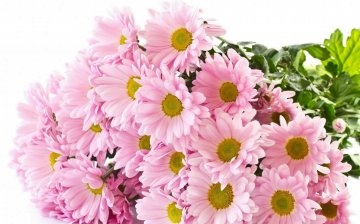
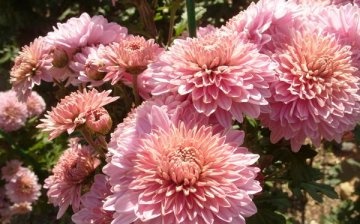
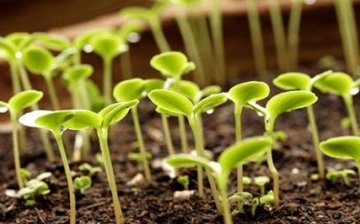
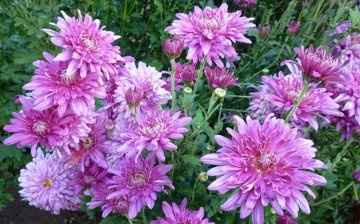
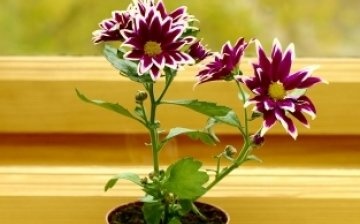
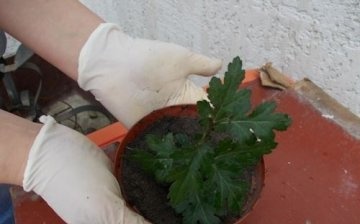









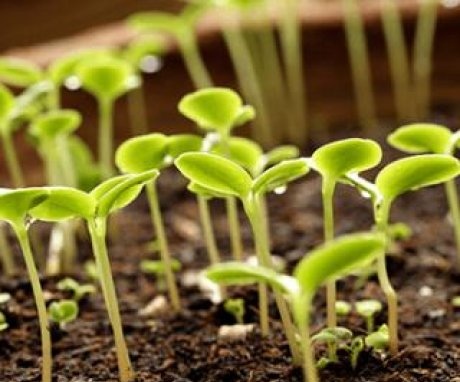
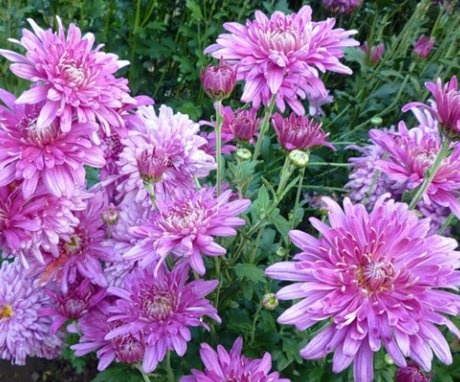
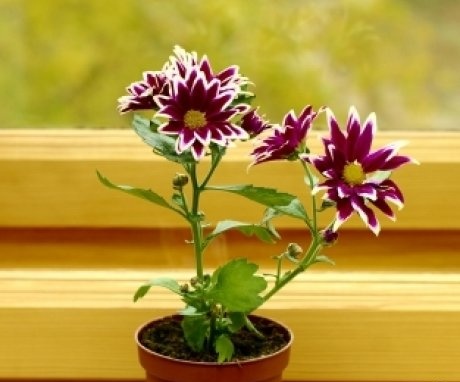
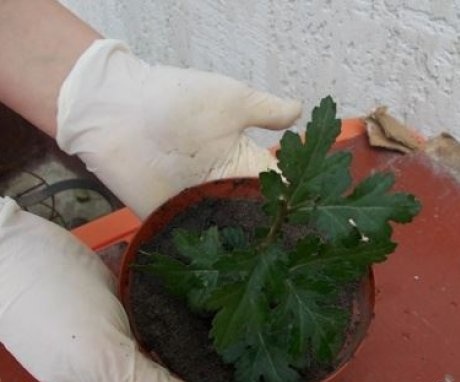
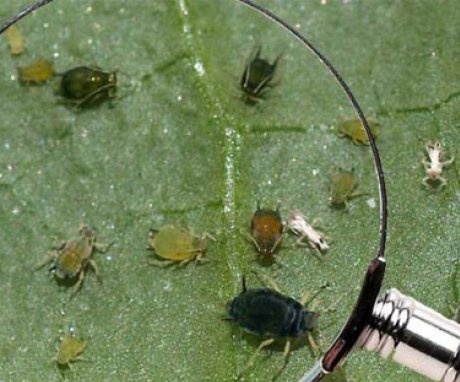
I also thought about planting chrysanthemums at home. And it was interesting to learn about leaving and learn useful tips. I want an ordinary alpine chrysanthemum, I think there is enough sun on the balcony.
I have a chrysanthemum growing on the balcony, but has not bloomed yet. There are a lot of buds, I thought to take her home, but since she tolerates temperatures down to -10, let her stay on the balcony for now. Maybe it will have time to bloom.